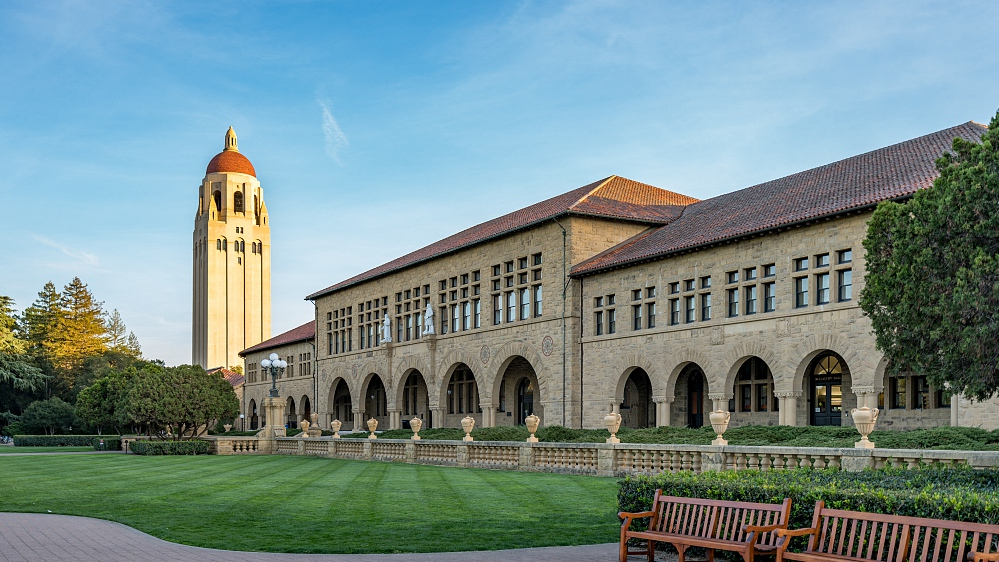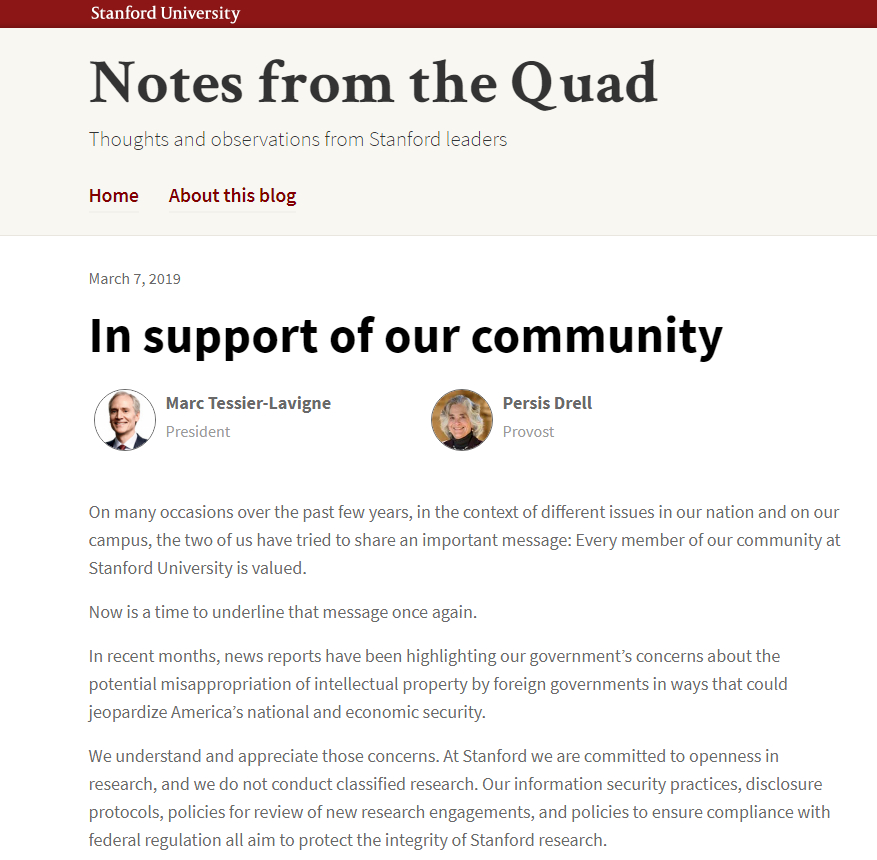
Opinion
17:45, 11-Mar-2019
Three encapsulated messages in Stanford’s post
Zhu Zheng

Editor's note: Zhu Zheng is an assistant professor focusing on constitutional law and politics at China University of Political Science and Law. The article reflects the author's opinion, and not necessarily the views of CGTN.
On March 7, 2019, in a post titled “In support of our community” that appeared on “Notes from the Quad,” a Stanford campus blog, the president and the provost of Stanford University reaffirmed the university's commitment to openness and reiterated the value of international collaboration and diversity.
In their statement, they highlighted the incredible strength showed by members of the broad Stanford community. According to them, talented people from around the globe have brought diverse expertise and made contributions to “the work being done to create a brighter future for our world.”
They urged that, where possible, all Stanford members should make efforts to protect the openness of Stanford research and prevent “attentiveness to national security concerns [from bleeding] into something more insidious – questioning people based on their national origin or their heritage.”
In their perceptions, the endeavors to protect national security and to advance technology development can go hand in hand, and "concerns about the misappropriation of intellectual property in ways that jeopardize national security" should not be an excuse to impair the integrity of research.

The “In support of our community” post
The “In support of our community” post
This clear and strong message sent by Stanford amid the escalating tensions between China and America over technology theft encapsulates a three-fold meaning.
First of all, it shines light upon the possible conflict between scientific research and national security. The rapid progress in the realm of mobile technology, such as 5G, has genuinely facilitated communication between people and nations, but in the meanwhile, it has posed a long-term risk to the military and economic security of a sovereign state.
Therefore, any country that dreams of attaining technological competitiveness will have to be more engaged in scientific exchange and globalization on the one hand, and keep a close eye on espionage conducted by near-peer and asymmetric competitors on the other.
This leads us to the second and more fundamental point, which is that there is a permanent and intrinsic contradiction existing between innovation and protection over intellectual property rights. For better or worse, while science and technology requires a free flow of ideas to enable discovery and innovation, the very concept of intellectual property rights, as defined, however, attaches tremendous weight to exclusiveness, which may end up hindering free exchanges of knowledge and wisdom and slowing down the process of innovation.
That said, stimulated by the profits and monetary gains, university laboratories have an innate sense to license part of their inventions out; however, while doing so they make sure they do not disclose all the information about their valuable innovations. In this sense, protection of intellectual property rights is an art of balance.
Finally and most importantly, the Stanford letter reaffirmed the value of academic freedom and independence. The message the president and the provost conveyed is that the independence of members of an academy or university is vital for original scientific contribution and, while under siege today, it is what sets academic research and scientific innovation apart from other jobs. And to say the minimum, academic independence should be protected and separated from politics and serve as a driving force behind a country's scientific and technological advancement.
The three subtle and nuanced messages embedded in the statement are visionary and inspirational; they are worth being taken seriously by all.
(If you want to contribute and have specific expertise, please contact us at opinions@cgtn.com.)

SITEMAP
Copyright © 2018 CGTN. Beijing ICP prepared NO.16065310-3
Copyright © 2018 CGTN. Beijing ICP prepared NO.16065310-3